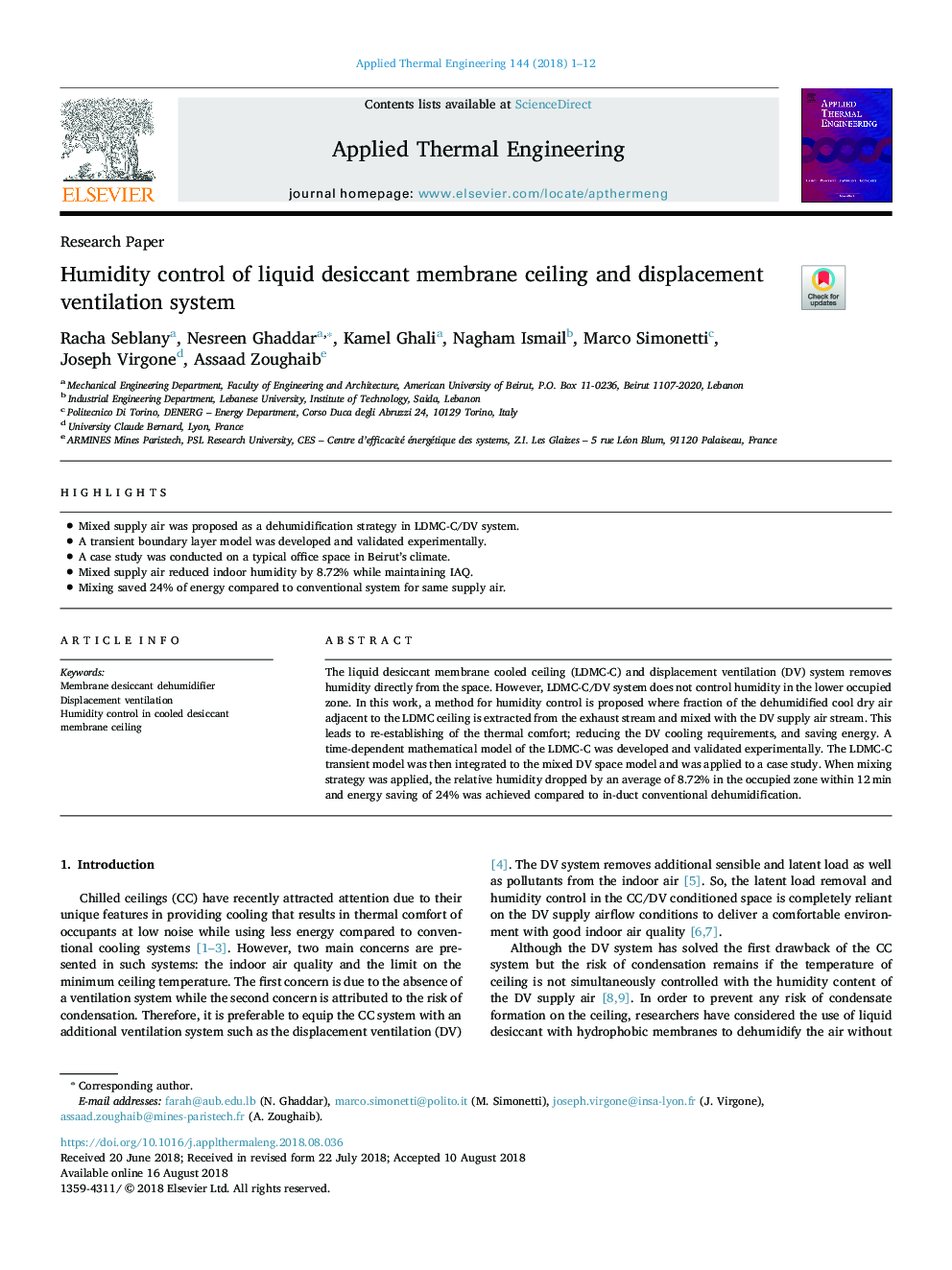| Article ID | Journal | Published Year | Pages | File Type |
|---|---|---|---|---|
| 8941910 | Applied Thermal Engineering | 2018 | 12 Pages |
Abstract
The liquid desiccant membrane cooled ceiling (LDMC-C) and displacement ventilation (DV) system removes humidity directly from the space. However, LDMC-C/DV system does not control humidity in the lower occupied zone. In this work, a method for humidity control is proposed where fraction of the dehumidified cool dry air adjacent to the LDMC ceiling is extracted from the exhaust stream and mixed with the DV supply air stream. This leads to re-establishing of the thermal comfort; reducing the DV cooling requirements, and saving energy. A time-dependent mathematical model of the LDMC-C was developed and validated experimentally. The LDMC-C transient model was then integrated to the mixed DV space model and was applied to a case study. When mixing strategy was applied, the relative humidity dropped by an average of 8.72% in the occupied zone within 12â¯min and energy saving of 24% was achieved compared to in-duct conventional dehumidification.
Keywords
Related Topics
Physical Sciences and Engineering
Chemical Engineering
Fluid Flow and Transfer Processes
Authors
Racha Seblany, Nesreen Ghaddar, Kamel Ghali, Nagham Ismail, Marco Simonetti, Joseph Virgone, Assaad Zoughaib,
